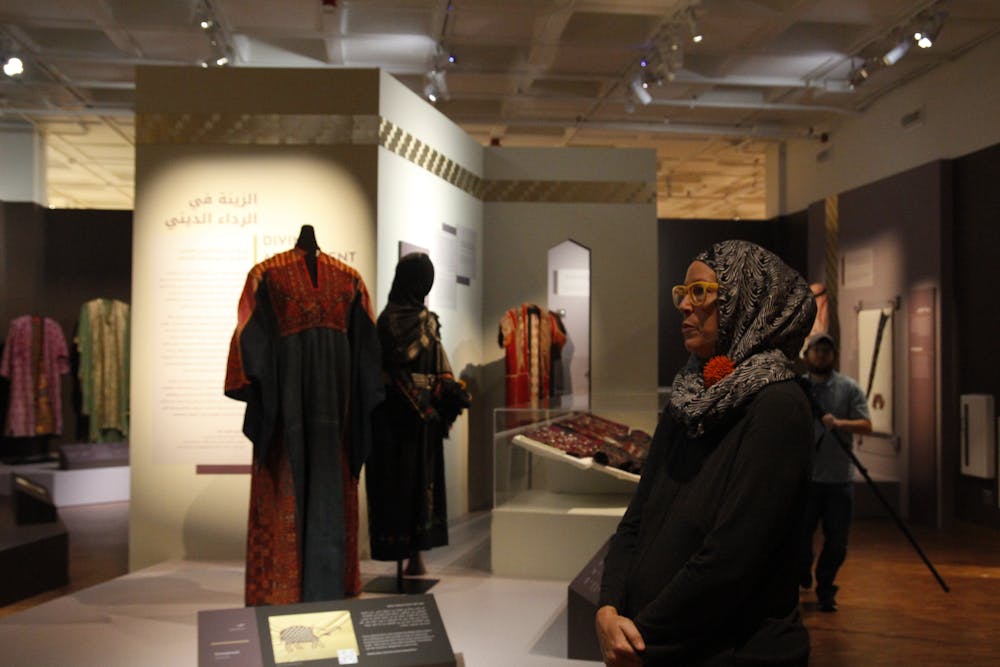Growing up in rural Oklahoma, Chickasaw Nation member and Choctaw descendent Brandie Macdonald found museums inaccessible. For one, they were expensive, but they were also one-sided.
“As I got older, I saw museums as spaces that talked about Indigenous native people, but never had us talking about our own identity,” Macdonald said. “They cared more about our ancestral bodies, they cared more about our objects versus living, human, breathing native folks.”
Now, as the executive director of the IU Museum of Archaeology and Anthropology, she’s helping that to change. To get there, she asks a lot of questions.
“How do we create these spaces that are community-centered?” Macdonald said. “How does a museum create a space that is not just about the object, but is about people and their stories, where people are seen and can see themselves, can see others?” One of the ways that she and the IUMAA are fleshing out the museum is the exhibit “Through Our Eyes: A Reclamation.” The IUMAA, together with IU Libraries’ Archives of Traditional Music, received a grant from the Library of Congress for the project.
Three Indigenous artists — Debra Yepa-Pappan, Molina Two Bulls and Yatika Starr Fields —were invited to examine pieces from the Wanamaker Collection of American Indian Photographs and Documents as well as from the Edward S. Curtis Collection to reinterpret them from their perspectives. Those reinterpretations are the backbone of “Through Our Eyes”.
The reimagined pieces are based on the work of Curtis, an ethnographer who recorded Indigenous language and lore and photographer Joseph Dixon. Rodman Wanamaker, a Philadelphia department store heir, hired Dixon for three expeditions between 1908-1913. Those journeys were meant “to document the way of life of Native Americans, whom he saw as a ‘vanishing race,’” according to the Smithsonian Institute.
Fields, an Osage, Muskogee, and Cherokee painter, said that the Wanamaker expeditions told a story of Indigenous identity from a non-native perspective.
“So, for me to utilize this collection and talk about who we are and provide that narrative in an Indigenous way, was really important for me as a Native artist,” Fields said.
Fields, as well as Yepa-Pappan, who is Jemez Pueblo and Korean, purposefully use the present tense when speaking of Indigenous cultures and their goals for the exhibit.
“When you see historical photos of Native people, I think it really presents that Native people only existed in the past,” Yepa-Pappan said. “My job as an artist and in the work that I do is always to show Native people as contemporary people, and to show that we’ve been here all throughout history, we’re still here, and we’re still going to be here.”
Yepa-Pappan’s mixed-media piece, “Looking Forward,” depicts her daughter and nieces in vivid oranges, reds and blues, in contrast to the black and white photographs of the Wanamaker Collection.
“There’s just so much about our culture that’s just so vivid and bright that I was hoping that that would come across in this piece as well,” Yepa-Pappan said.
Molina Two Bulls contributed multiple dolls to the exhibit. Her favorite is one that was inspired by a photograph of her grandmother on her wedding day. She described it as more modern-looking than the other dolls. Nonetheless, it’s not lacking in history.
“She’s carrying a braid of wild turnips, we call them ‘tinpsila’ in our language,” Two Bulls said. “We harvest them every year and we dry them, and we use them in our soups and breads and in a lot of our foods. Since we come from a hunter-gatherer society, a lot of our food had to be dried so we could eat in the winter.”
Two Bulls is Oglala Lakota and Northern Cheyenne.
Two Bulls’ pieces are more than fabric stitched together; they are memories and culture, dolls with a story behind them. This is what the IUMAA is aiming for. Macdonald said they’re focusing on telling stories, not just presenting archaeological and ethnographical items. The goal is relation.
“What I can hope is that [visitors] come in here and that they are able to see the stories of other folks, that they are able to find their own connections to their lives,” Macdonald said.
When asked about her hopes for what visitors will take away from the exhibit, Two Bulls said she wants guests to see Indigenous communities as more than black and white photos in an archive.
“We’re still here; we still practice our culture or activities as whole people, not as something you read about in a history book,” Two Bulls said.




